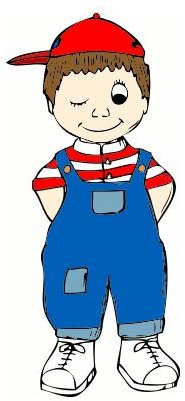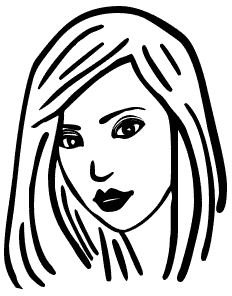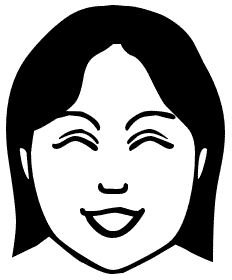The Meaning of Facial Expressions in Different Languages & Cultures - Gestures and Mimicry
Smiles
Smiles are a powerful tool of body language. They can be used to express a great variety of meanings. In the US a broad smile exposing the teeth is the strongest form, showing joy, friendliness, politeness and approval. If the smile does not reach the eyes, however, it expresses insincerity. Historically, exposing the teeth when smiling was construed as unfriendly. In ancient times, man snarled when angry, exposing his canine teeth. Legend has it that many a missionary lost his life when smiling at indigenous tribes with his lips parted, because it was construed as a sign of hostility and pending attack.
A lopsided smile with only one corner of the mouth drawn up, expresses doubt and even cynicism or sarcasm. A smile can also be motivated by fear or to hide nervousness. A not so friendly smile is one where the smiler makes fun of the other person and ridicules him or her. A certain belief holds that one should not smile at or expect a lot of smiles from Russians, because they only smile at people they know or if they have a distinct reason for a smile.
Winks

A wink is made by either briefly closing one eye or by rapidly blinking both eyes. Like the smile, the wink can have several meanings. It can be a flirtation, especially if made to a person of the opposite gender, a means of mute communication between two people or a signal of a shared joke or experience. If accompanied by words, a wink can also be used to take “the sting” out of what has actually been said.
Puppy Face

Making a puppy face can be a very efficient means of body language communication. The head is slightly tilted downward, the lower lip protrudes and the eyes look straight up at the other person. The purpose is to make one look slightly vulnerable and childlike with the intent of getting out of having to do what one does not really want to do or to plead forgiveness. The person making a puppy face might also simply want to gain sympathy by looking “cute”. It can also signal shyness and to a certain degree or be used as a plea not to expect too much. The puppy face is often pulled to provoke a smile in the other person and thus “to break the ice.” Perhaps the most well-known puppy face maker was Lady Diana – at least in her younger days – and at the beginning of her career as Crown Princess.
Eye Contact

In the United States, eye contact is both positive and negative, depending on how it is used. Establishing eye contact during a conversation is generally meant to create a link of trust between people. Constant eye contact, accompanied with a stern look, can be used to intimidate and make the other person nervous.
In Japan, direct eye contact during a conversation should be limited so as not to be offensive. Brief and occasional eye contact is appropriate. One should quickly glance into the eyes periodically throughout a conversation.
Wrinkled Brow

Wrinkling the brow can indicate that a person is deeply in thought. It can also express concern, doubt, frustration or disbelief.
With the exception of eye contact, it appears that facial expressions, as opposed to other means of conscious body language, do not have different meanings and interpretations in different cultures.
References
The Psychology of Facial Expression 1st Edition; Cambridge University Press; March 1997
Atlas of Facial Expression: Oxford University Press; 1990
Image Credits
Smiles Image: pdclipart.org
Winking Boy Image: pdclipart.org
Puppy Face Image: pdclipart.org
Eye Contact Image: Wikimedia Commons;Clngre; creativecommons.org/licenses/by-sa/3.0/deed.en
Wrinked Brow Image: pdclipart.org
This post is part of the series: Conscious and Involuntary Body Language
50-60% of communication is conducted by body language, whether conscious through gestures or involuntarily through reactions. Learn about differences, similarities and interpretations according to countries and cultures.
